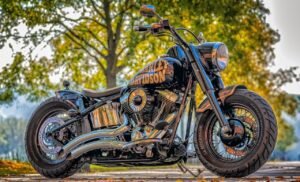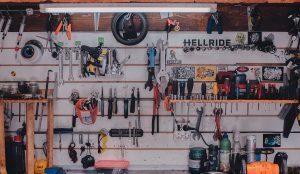Best second motorcycle to buy after your beginner bike
Updated on | By Mohit Chauhan
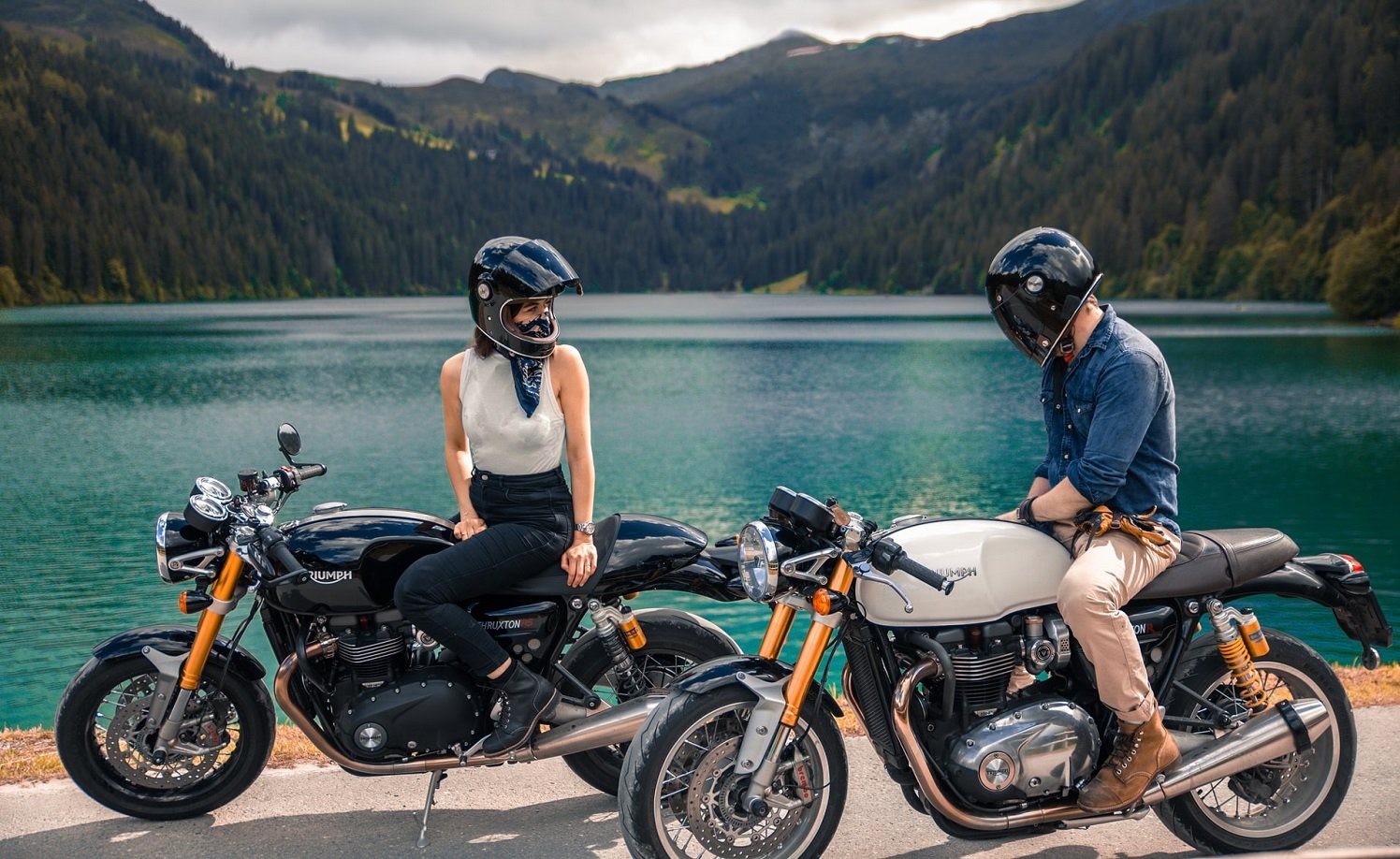
Beginner motorcycles are very much important to get your hands around the bike and learn as much skills you can before hoping to the next level. But once you have attained these skills, almost every biker thinks about replacing his beginner bike with an intermediate one.
Today we are going discuss about the best second motorcycle that you can get after you have done riding around on your beginner motorcycle.
This list is made keeping various aspects in mind, vis-à-vis; price, riding style, design, engine capacity, and power. But before we proceed ahead, keep in mind that these bikes are only meant for intermediate riders and not for beginners or novice riders since these are a little heavier than your light weight beginner bikes. So if you think you are ready and have all the required skills to take a step forward, keep on reading further!
Best second motorcycles list
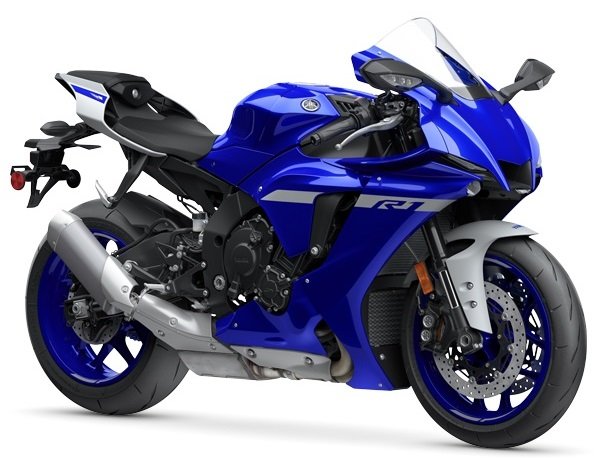
Yamaha YZF-R1
The all new Yamaha R1 with a 998cc inline-four-cylinder engine not only pleases with its discreetly pepped up look but is now more streamlined, which creates a positive effect on the top speed. As far as the performance of the engine is concerned, the well-known performance figures of 200 horse power @ 13,500 RPM provides a torque high enough to woo any intermediate rider. The optimized cylinder head, injection, cooling system, and the oil circuit are a step in the right direction. Besides, the slick tires and the chassis can handle full throttle without any worries.
The new and improved functions strengthen the electronics package of the YZF-R1. You get a brake control system (BC) with cornering function, and an upgraded launch control. Furthermore, it is now possible to set the engine braking torque in three stages and thus adapt it to your personal preferences. The traction control (ten levels) regulates the slip on the rear wheel efficiently and the wheelie control (three levels) also does its job well.
All in all, it’s the best second motorcycle to go for if you are looking to upgrade from your first beginner bike.

Honda Rebel 1100
Honda Rebel 1100 (aka CMX 1100 Rebel) comes with an in-line twin-cylinder engine that offers 1,084 cm³ of displacement with a significantly increased flywheel mass. The peak power of 87 Horse Power comes at 7,000 RPM’s and the peak torque of 98 NM comes in at just 4,750 RPM. It has a six-speed gearbox and just like Africa Twin, the two-cylinder in the Rebel can also be coupled with the dual clutch transmission. The rider can also choose from three preset driving modes, with an option to configure the fourth manually.
The tubular steel chassis of the Rebel 1100 follows the layout of its little sister (Rebel 500). The seat height is only 700 millimeters to accommodate short riders and underneath there is a 3 liter storage compartment with a USB socket. The pillion seat is easy to remove and the fuel tank has a capacity of around 13.6 liters. It has a 43 mm telescopic fork at the front, and stereo shock absorbers at the rear.
There is a 16-inch wheel with a 180/65 tire at the back, stopping power is provided by a single-piston brake caliper with a 256 mm disc. With a full tank, the Rebel weighs just 223 kilograms, however, with DCT (dual clutch transmission) its ten kilograms more. Pretty ideal for an intermediate rider, don’t you think?

Triumph Daytona 675R
Triumph (largest UK-owned motorcycle manufacturer) successfully managed to beat the Japanese Super Sports bike industry with its amazing Daytona 675. Its powerful three-cylinder engine proved that sky-high rev limits and frustratingly boring inline four-cylinders are not necessarily a must in the class. Specification wise, the R’s engine is similar to that of Daytona 675; however, it has a bit more temperament and oomph!
The R model comes standard with a Quickshifter (only for upshifting, not for downshifting), and a swift handling that is ideal for intermediate riders to simply crush every corner and ace on a twisty racetrack. The R uses the same chassis as the normal Daytona except for a splash of red paint on the sub frame. Additionally, it replaces the standard Kayaba fork and shock absorbers with an upgraded Öhlins NIX30 fork and Öhlins TTX36 shock absorbers. Both are of impeccable quality which is quite noticeable when you ride around at high speed!
Powered by a 675 cc four stroke engine, it produces a maximum power of 128 HP @ 12,500 RPM and maximum torque of 74 NM @ 11,900 RPM, sufficiently high enough for your second bike. So, if you’re looking for a lightweight racing machine that has everything and a little bit of ‘poshness’, check out the exceptional Daytona 675R.
PS: The R models of the Triumph Daytona 675 are rare, which is why you need a little bit of luck to find one. Read our guide to buying used motorcycles before finalizing your deal.
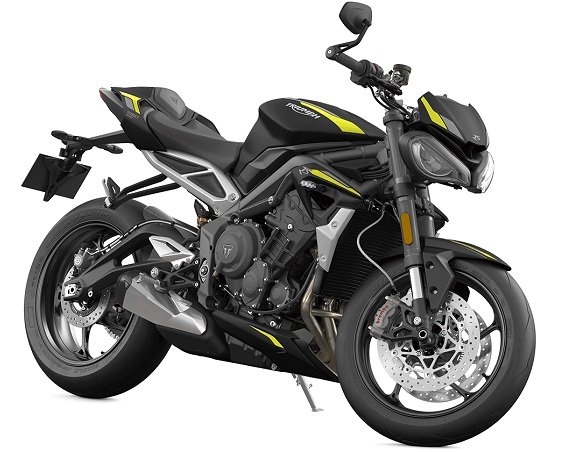
Triumph Street Triple RS
Compared to its predecessor, the new Street Triple RS comes with upgraded specifications that prove to be even more joyful on the country roads. The 765cc 3-cylinder engine outputs a maximum power of 123 HP @ 12,750 RPM and a maximum torque of 79 NM @ 9,350 RPM. In combination with the comfortable seating position, it gives the riders a high degree of accessibility.
Coming to the suspensions; it has an Öhlins STX40 shock absorber at the rear and the proven Showa Big Piston fork at the front that ensures an extra comfortable ride. The seat is very comfortable, almost suitable for touring, which is generally not expected from such a sporty motorcycle. The small wind shield even provides a certain amount of wind protection. Thanks to the relatively low saddle (825 mm); even shorter riders will be able to cope with RS without any problems.
The all new shift assistant (up & down) which works gently but precisely in every speed range, a 5 inch TFT color display, more refined exhaust sound, and an incredible performance with rider focussed tech enhancements, promises to deliver a joyous experience without boring an intermediate rider with unnecessary features.

Honda Africa Twin 1100
Are you looking for an uncomplicated mid-range travel enduro that is not overpowered and is based on technology that is built to last? The answer is Honda Africa Twin!
When the new generation of the Africa Twin from Honda came onto the market in 2021, many motorcycle enthusiasts breathed a sigh of relief. They had waited a long time for an upgraded version which was specifically built for long distance tours. The newer version has a displacement of 1,100 cubic centimeters and more powerful two-in-line cylinders that produces around 102 Horse powers. The maximum torque of 105 NM is achieved at moderate 6,250 RPM’s. Thanks to the crank pin offset, it sounds a little rough, but is acoustically restrained even at higher speeds. There are a total of six driving modes, namely Tour, Urban, Gravel, Off-road, and User 1 & 2 that can be customized manually. They differ in terms of power delivery, sensitivity of cornering ABS, and engine braking. All of which is displayed on the 6.5-inch TFT screen that is pretty easy to read during your ride.
The Africa Twin 1100 is available as a standard model as well as a better equipped version with the nickname ‘Adventure Sports’. The latter offers an electronically controlled chassis called EERA™ (Electronically Equipped Ride Adjustment) as an option, a slightly enlarged tank and shortened spring travel. But the riders also have to invest few extra thousands to get this.
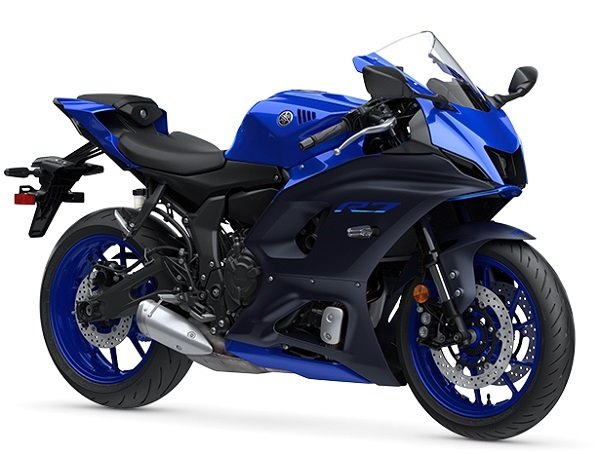
Yamaha R7
Yamaha’s new R7 is a small supersports bike based on the successful MT-07 model. The R7 uses an Assist & Slipper clutch, i.e. a servo-assisted anti-slip clutch, which requires about a third less manual force on the non-adjustable clutch lever. The R7 is also available as an A2 compliant version.
The 689cc liquid-cooled engine outputs 73.4 PS at 8,750 RPM’s and 67 NM at 6,500 RPM. The new and upgraded version features adjustable USD fork from Kayaba with 130 millimeters of spring travel, radially hinged four-piston brakes on 298-millimeter brake discs, and a new digital cockpit. However, Yamaha has not equipped the little racer with any other driving aids or driving modes except with the obligatory ABS. The 10-spoke alloy wheels are known from the MT-07, however for R7, instead of Michelin, you get Hypersport S22 from Bridgestone (dimensions of the tires: 120/70 ZR17 at the front and 180/55 ZR 17 at the rear).
All things considered, the R7 is basically a fully faired MT-07 with an advanced CP2 engine and an ultra-light weight chassis that is ideal for intermediate riders on both track as well as urban environment.

Aprilia RS 660
With the RS 660, Aprilia has launched a sporty mid-range motorcycle that the competition has little to offer in terms of engine, ergonomics and chassis!
The engine has character similar to Aprilia V4 due to the crank pin offset of 270 degrees, throttle bodies, piston rings and valves. From 660cm3 of displacement, Aprilia tickles 100 HP and 67 NM of torque, coupled with a responsive rev range. The Italians are particularly proud of the fact that 80% of the maximum torque is already available at 4,000 RPM and 90% from 6,250 RPM. The rev limiter only kicks in at 11,500 RPM.
With all the experience from 54 world championship titles and with the certainty of being at the forefront of the chassis when it comes to the big sports models, the engineers of Aprilia have provided the RS 660 with a wonderfully agile and at the same time neutral and stable chassis. The bike includes full range of electronics; cornering ABS, traction and wheelie control, all of which can be adjusted with great sensitivity from the crystal-clear TFT cockpit. You can even adjust the engine braking torque to suit your needs. Furthermore, the RS 660 is not too high, even short riders can get their feet safely on the ground, while tall riders praise the knee angle.

Kawasaki ZX-6R
The Kawasaki ZX-6R sports model first appeared in 1995. The motorcycle was based on the older version of the Kawasaki ZX-9R, including the proprietary supercharger, which gives an increase in power at high speeds.
Speaking of the current model; the DOHC 4-valve water-cooled parallel 4-cylinder 636cc engine provides the fun and excitement of supersports to a wide range of riders. The engine and chassis are optimized for variety of riding styles such as tracks, highways, and urban riding. In addition, the bike is equipped with advanced rider support technology such as KQS (Kawasaki Quick Shifter), KTRC (Kawasaki Traction Control), power mode selection, and KIBS.
The newly adopted twin LED headlights are equipped with high beam, low beam, and position lamps on the left and right respectively. The seat shape has been upgraded to improve foot comfort by narrowing the front part and shortening the front and rear length to make it easier for riders to hit the seat stopper. The handlebar is made from SS, which is easy to grip, and the upper body has a light forward leaning posture that is easy to maneuver on the street.

KTM 1290 Super Duke R
The 1290 Super Duke R was introduced in 2013 as the pinnacle model of naked KTM version. The newly developed 1,301cc water-cooled V-twin engine includes a ride-by-wire system, the world’s first sports motorcycle stability control, ABS, bank angle sensor, and traction control. A cantilever swing arm is also adopted in this model of KTM.
The more recent version has a redesigned frame and increased rigidity. The engine is also refined to improve output and reduce the weight of the vehicle (about 6kg in terms of dry weight).
When the two-cylinder V-engine is started, there is a low rumble. The riders can feel the rush of adrenaline right away. The seat is high but comfortable, the handlebars are easy to grip, and the riding position is relaxed. The chassis of the KTM 1290 Super Duke R contributes significantly to the remarkable driving pleasure. Like the engine, it is excellently tuned and perfectly balanced.
The very unusual, angular design of the KTM 1290 Super Duke R may not be something everyone can immediately adapt to, but if you can live with it and have the necessary riding skills, you will have great pleasure on this beast.

Husqvarna 701 Enduro
The Husqvarna 701 Enduro can do a lot more than you can actually think of, and is almost indestructible. It is a real enduro and is only meant for real adventure riders! It is the finest product and, so to speak, the ‘Olympus’ for all enduro riders.
The front wheel of the enduro is guided by a 48 mm WP XPLOR upside-down fork, with a 250 mm travel. At the rear, the WP XPLOR dampens and has a 250 mm of spring travel. The Husqvarna 701 Enduro rolls on a Continental TKC 80 in the dimensions 90 / 90-21 at the front and 140 / 80-18 at the rear. The Brembo brakes consist of a two-piston floating caliper and a 300 mm disc at the front and a single-piston caliper with a 240 mm disc at the rear.
The automatic gearshift in the recent model ensures extremely fast gear changes through all six levels. With the so-called “Quick Shift”, the gears can be steplessly changed up or down without having to operate the clutch and without taking your hand off the throttle!
The 693cc liquid cooled single cylinder engine outputs a maximum power of 74 Horses @ 8,000 RPM and maximum torque of 73 NM @ 6,500 RPM. Besides, a dry weight of 146 kilograms makes it ideal for everyday use.

BMW R1200 GS
The BMW R 1200 GS is considered by many bikers to be the dream motorcycle par excellence. Like the early versions of the BMW GS, the R1200 GS was able to further consolidate the series’ standing as a sovereign all-purpose motorcycle. Whether it’s a relaxed Sunday break on winding country roads or an adventure tour through Himalayas, this bike knows no limits.
Thanks to cardan drive, it is not only durable and tough, but also offers a comfortable ride.
Among other things, the bike includes a Telelever front wheel guide, aluminum single-sided swing arm with torque support, an integrated cardan shaft at the rear, as well as a three-disc brake system with ABS. There are also assistance systems such as the ASC drive slip control and the Rain, Road, Enduro and Pro driving modes, as well as cornering ABS. Even with two fully loaded aluminum side cases, luggage roll, and a tank bag, the GS remains stable and light-footed.
Not to forget an extremely powerful, air and water-cooled two-cylinder engine that produces 92 kW / 125 PS and 125 Newton meters of torque!
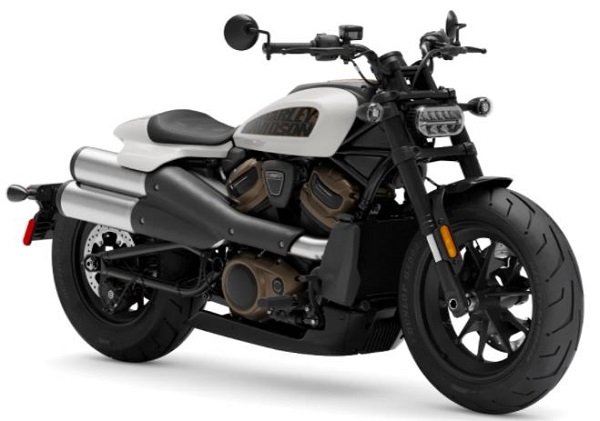
Harley-Davidson Sportster
The Harley-Davidson Sportster S is the first model in the new, completely turned Sportster series. The four-valve V2, which turns up to 9,500 RPM’s if required, delivers a strong 90 kW / 122 PS as well as significantly more torque in the lower and medium speed range. Compared to the bikes of the previous series, the Sportster S is the first of the new era bike that represents a quantum leap in performance, technology and design.
Harley-Davidson has also pulled out all the stops in terms of technology with the Sportster S. It consists of 3 preset riding modes (sports, road, and rain) and 2 manual modes that can be customized as per your riding style. Needless to say, cornering traction control and cornering ABS are onboard.
Cruise control, self-resetting turn signal, TFT round display and keyless ignition are also provided as standard.
All in all, we can say that Sportster is an eye catcher with its high-arm, half-height exhaust pipes resembling a scrambler, color-contrasting magnesium components, and an aggressive-looking LED transverse headlight. So if you are looking for a power cruiser as your second bike, look no further than the mighty Sportster!

Yamaha MT-07
The Yamaha MT-07 is a simple, easy-to-drive and affordable mid-range motorcycle. The 688cc, 270 ° crank water-cooled parallel 2-cylinder DOHC engine is based on cross-plane concept, which has easy-to-understand torque characteristics, similar to the MT-09. Combine this with a compact and lightweight body, it provides a joyous ride in urban roads.
The 2021 model complies with European Euro 5 regulations and has a new style; it uses LED headlights similar to the MT-09. Along with that, the shape of the tank is also changed and the shape of the brake disc has changed to circular. The handle is now a tapered bar that is 32 mm wide.
Yamaha’s bare MT series has become the most important segment in the Japanese model range. A major part of this is attributable to the MT-07. The mid-range roadster is the best-selling Yamaha in USA, thanks to the successful combination of easy-to-manage yet fully-fledged riding pleasure and a very attractive price.
PS: In the North American market, it was initially sold under the name “FZ-07” (2015-17). But later, it was changed to the same MT-07 as in Europe and Japan.

KTM Duke 890R
After only three years of its launch, the KTM 790 Duke had a successor; the new 890 Duke.
The noticeably improved 890 Duke R, derived from the KTM 790 Duke, is easy to ride and at the same time incredibly powerful. It is powered by a two-cylinder in-line engine that is exactly 100 cc more which increased the available power to 84.5 kW / 115 PS.
The all new Duke 890R comes with an updated electronic system, ideal for a mid-range motorcycle. In addition to the three well-known riding modes Rain, Street and Sport, there is also an optional track riding mode, the settings of which can be freely selected by the rider. All functions can be preselected or deactivated in several stages. Besides, a 6-axis sensor controls the ABS cornering.
New to the 890 Duke are a shortened gear lever, lighter clutch springs and a more advantageous, tuned, but optional two-way Quickshifer. To add to this, the relatively low seat height of 82 centimeters remains unchanged, so that even those less experienced feel comfortable on the new mid-range KTM.

Triumph Speed Twin
The Triumph Speed Twin promises motorcycling in its purest form. It is not a streetfighter, scrambler or cruiser, but a classic roadster. All parts are beautifully finished and are made of materials just like in the good old days: aluminum and steel instead of plastic or carbon. Yet, it comes retrofitted with modern day elements required to make your ride safe. These include, electronic throttle valve control (ride-by-wire), ABS, traction control, three driving modes “road”, “rain” & “sport”, LED lighting, a digitally enriched double instrument, and one USB charging socket. Additional accessories such as tire pressure monitoring system is also available.
A look at the round cockpit immediately reveals the amalgamation of classic and modern technology: analogue instruments are supplemented with digital information so that nothing is missing.
The engine is similar to the other Triumph “Modern Classic” models. Two cylinders together give a displacement of 1197cc with an output of 100 horses, enough to keep the 196 kg bike going.

Yamaha Ténéré 700
The Yamaha Ténéré comes as a pure riding motorcycle for off-road terrains and that too with far less complicated features. Unlike BMW, Honda, KTM or Triumph, Yamaha is taking the risk of breaking away from the high-tech trend in the travel enduro category. Nevertheless, the Ténéré offers a lot; at least 24 centimeters of ground clearance, excellently coordinated spring and damping elements, and a decent seat height of 87.5 centimeters.
The liquid-cooled two-cylinder in-line 689 cc engine outputs 54 kW / 73 PS at 9,000 RPM and 68 NM at 6,500 RPM. The chassis with 21-inch front and 18-inch rear wheels shines with precision and swallows unevenness without any tendency to swing. The well-chosen tire formats and the tire type also contribute to this: The Pirelli Scorpion Rally STR shines on asphalt and is also efficient while off-roading. The engine, which has been redesigned in detail compared to the MT-07, is able to put itself in the limelight thanks to the reduced final ratio.
There is a very stable, neatly fitted luggage rack system with aluminum boxes that can be precisely fixed, as well as other accessories that can make long trips to remote areas more pleasant.
Bottom Line
There is no such thing as the perfect motorcycle. The needs of each individual are too different for that. But there are features that make a motorcycle suitable for riders. You should use these characteristics as a guide when choosing your second motorcycle.
In a nutshell, a motorcycle is ideal for an intermediate rider if it is easy to ride and conveys trust. Its operation should be as little as possible and should not unnecessarily distract you from the road.
Hope you loved our detailed guide to buying a second motorcycle after your first beginner bike. Let us know your thoughts on how we can improve. Feel free to write us back. Take care 🙂

